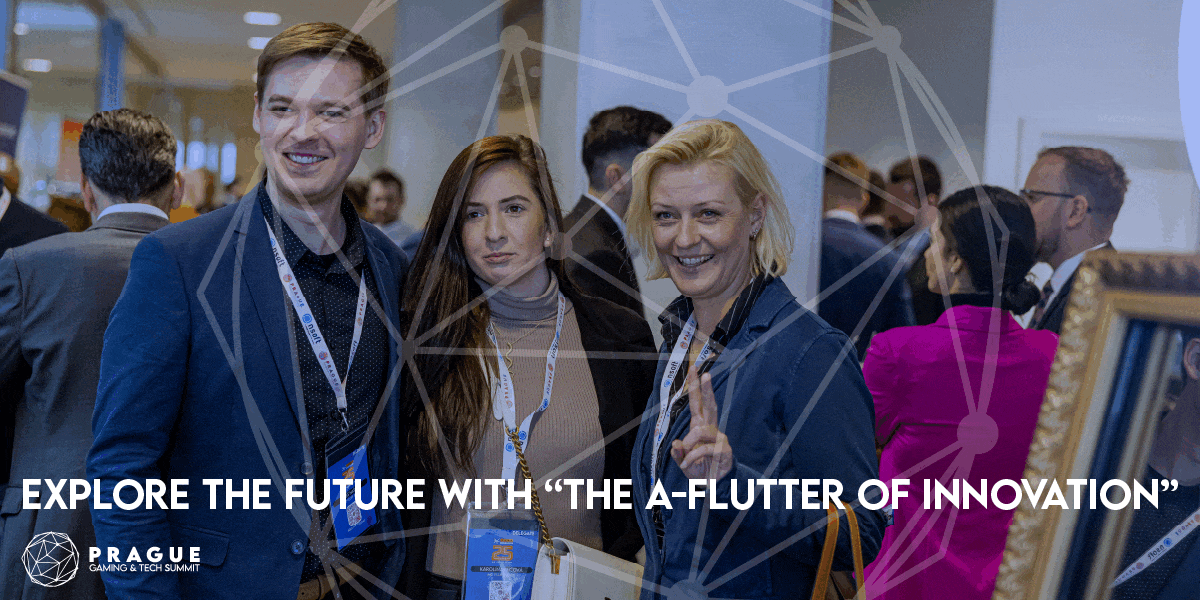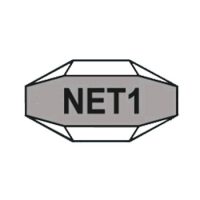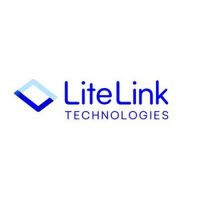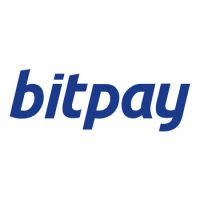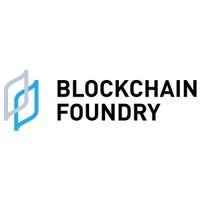Blockchain
HPB Hardware Random Numbers serve as Security Cornerstone for Decentralized Applications

As an innovative blockchain project combining software and hardware for ultimate speed and security, the HPB blockchain proposes a distributed and verifiable hardware random number solution with a well-designed incentive mechanism.
Demand and application for randomness can be seen everywhere in our daily lives such as games, lotteries, sampling, fair distribution and so on.
“Every electronic device needs randomness and needs a lot of it,” Marcin Pawłowski at the University of Gdańsk stated that, “Randomness is necessary whenever you need security. Whenever you want secure communication, a cryptographic key must be generated. It has to be generated randomly so that no adversary can easily guess it… If someone can predict these numbers (it doesn’t have to be perfect–if he or she can guess some of them it’s enough), they can listen to your conversation.”
In our daily life, random numbers serve as an important medium for any fair and secure system.
The Risks in Random Numbers
In fact, the concept of a random number is not difficult to understand. It is a randomly generated number based on probability. Statistically, random numbers exhibit no predictable pattern or regularity, that’s why they are unpredictable and confidential.
In order to generate random numbers, a variety of methods were invented: the use of dice, roulette wheels, coin-flipping and other statistical methods; the use of the computer languages; the use of quantum mechanic principles and so on.
Currently, there are two main ways to obtain random numbers. One way is by only using software. For example, random numbers are obtained by creating a smart contract on Ethereum or by means of multi-stakeholder participation. The other way is to use hardware, where physical properties are directly obtained from the hardware to generate random numbers. However, both ways have their limitations. For instance, the software-based method is inefficient and easily manipulated, while the hardware-based approach makes random numbers unverifiable.
Technically, only the second method produces truly random numbers. The computer-generated numbers are considered “pseudorandom” because knowing how the program develops its computations makes it possible to predict these numbers, which only appear random.
Currently, many existing random number generators actually only produce pseudorandom numbers, whose values have already been predicted by computer programs. This is called a centralized random number generation system. The sequence of random numbers is very risky and will be manipulated by attackers, who can easily change the algorithms in the generation of random numbers. As mentioned above, not all the pseudorandom numbers are cryptographically secure.
The alternative to pseudorandom numbers are true random numbers, which can be derived from physical systems, such as the optical noise in lasers, radioactive decay in atoms, and hardware. A true random number taken from a physical system is not verifiably fair by nature. There is an example provided by Beacon from NIST (National Institute of Standards and Technology), even if the NIST got the entropy that was sampled from the radiation of the universe, they still knew the latest random numbers ahead of others and had the ability to select and interfere with the existing random numbers.
HPB‘s Decentralized Hardware Random Number Generator
Although the existing random number generators perfectly avoid some potential problems of randomness, uncontrollability and unpredictability, they still suffer from lack of security and verifiable fairness.
Consequently, people want to find a random number generator and release mechanism with provable fairness. A blockchain provides an decentralized network for verifiably fair random number generation. In addition to meeting the basic statistical requirements for random numbers, a useful random number generator on a public blockchain can be unpredictable, uncontrollable, unalterable and verifiably fair.
As an innovative blockchain project combining software and hardware for ultimate speed and security, the HPB blockchain proposes a distributed and verifiable hardware random number solution with a well-designed incentive mechanism.
For the first time, HPB achieves the perfect combination of software and hardware to generate random numbers, and applies it directly on the blockchain. HPB’s hardware random number generator (HRNG) generates random numbers from a physical process within HPB’s BOE (Blockchain Offload Engine). HRNG senses tiny variances in voltage (as little as 0.00001 volts) within an Analog-to-Digital Converter in the BOE. This ever-changing figure is used to help generate the random string of 256 digits and letters added to each new block.
This is in contrast to the paradigm of pseudo-random number generation commonly implemented in computer programs. Generated based on the consensus of HPB’s hardware BOE nodes on HPB MainNet, HPB’s hardware random number is a 100% hardware random number, which is very close to a true random number.
Meanwhile, HPB’s Hardware Random Number Generator has a built-in incentive mechanism to prevent collusion and attacks. More specifically, in HPB’s random number generation, all the nodes are the producers of random numbers, while the smart contract and external API calls are the consumers of random numbers. Guaranteeing the fairness of random numbers, this multi-stakeholder involvement ensures on-chain verification to prevent random numbers from being manipulated or tampered with. Also, the built-in incentive mechanism allows both random generators and consumers to obtain rewards by helping to maintain the random service.
Security Cornerstone for DApps
HPB hardware random numbers not only have the uncontrollable and unpredictable advantages of the traditional hardware random numbers, but also has the characteristics of decentralized incentives, cross-chain, distributed service, transparency, and verifiability.
HPB Partner, Jason Hu, noted that,”HPB’s HRNG can be applied to various decentralized businesses, including DeFi, on-chain games, on-chain lotteries, and HPB’s HRNG will act as security cornerstone for DApps. Now there are already some DApps that use HPB’s HRNG for more secure random number sources. For example, the star DeFi project, Nest Protocol, is already deployed on HPB MainNet. Besides, we are also exploring our HRNG’s integration with internet products.”
Also as disclosed recently, a blockchain project named Randomhub announced a partnership with HPB to provide RaaS (Random as a service) services. Randomhub will use the random numbers sources generated by HPB’s hardware random numbers generator to power various decentralized applications.
Dedicated to blockchain innovation, HPB Blockchain celebrates its third anniversary!
On July 23, AntChain (formerly Ant Blockchain) under the Ant Group, the parent company of China‘s largest mobile payments business Alipay, officially launched AntChain Station, which claimed to be “the first blockchain solution combining built-in software and a dedicated hardware accelerator globally”.
However, as early as 2017, Xiaoming Wang, the Founder of HPB, had already brought up and designed “the world’s first software and hardware blockchain solution”. In 2018, HPB released the Blockchain Offload Engine (BOE)–the world’s first independently-developed hardware accelerator to effectively integrate software and hardware for empowering a blockchain, as well as the HPB’s Hardware Random Number Generator.
At the time of High Performance Blockchain’s third anniversary, Xiaoming Wang, Founder and CEO of HPB said, “HPB is a fast-growing blockchain project that always leads blockchain innovation globally. Our strength lies in our ability to combine built-in software and a dedicated hardware accelerator for ultimate speed and security, allowing blockchain to come up with more useful applications. HPB will keep promoting HPB hardware random numbers’ application, as well as building a robust DeFi ecosystem. We look forward to working with more partners in the industry to promote blockchain innovations!”
Blockchain
Blocks & Headlines: Today in Blockchain – April 24, 2025 (Decrypt, CoinDesk, Cointelegraph, 80 Level, UNDP/BGA)

In an era defined by rapid innovation and ever-shifting regulatory landscapes, blockchain continues to prove its mettle across diverse sectors—from data privacy and prediction markets to gaming and sustainable development. Today in Blockchain, we explore five major developments shaping the decentralized world on April 24, 2025:
-
Europe’s New Privacy Guidelines: How the EDPB’s draft rules may redefine on-chain data handling.
-
Canada’s Blockchain Advantage: Lessons from Consensus Toronto on agility, talent, and national strategy.
-
Prediction Markets for Science: DeSci’s leap toward crowdsourced validation and the reproducibility crisis.
-
Ubisoft’s NFT Gaming Gamble: Yet another Web3 pivot in mainstream video games—and why it matters.
-
Blockchain for Good Accelerator: The UNDP joins forces with the Blockchain for Good Alliance to fuel SDG-focused innovation.
This op-ed–style briefing strips away the noise to deliver concise yet detailed coverage, incisive commentary, and big-picture implications for developers, entrepreneurs, regulators, and enthusiasts alike. Strap in as we decode today’s key blockchain headlines.
1. Europe’s Data Privacy Guardrails: EDPB’s Draft Blockchain Guidelines
What happened:
On April 22, 2025, the European Data Protection Board (EDPB) published draft guidelines clarifying how personal data must be stored and accessed on blockchain networks to comply with the General Data Protection Regulation (GDPR). Key takeaways include:
-
Minimize on-chain data: Avoid embedding personally identifiable information directly into immutable ledgers.
-
Data Protection by Design & by Default: Mandate early-stage DPIAs (Data Protection Impact Assessments) for any blockchain project touching personal data.
-
Controlled access & erasure mechanisms: Develop off-chain storage layers and governance protocols to satisfy “right to rectification” and “right to be forgotten” requirements.
Source: Decrypt
Why it matters:
GDPR’s foundational principles clash with blockchain’s inherent immutability and transparency. By issuing these guidelines, the EDPB seeks to preserve individual privacy rights without stifling decentralized innovation. However, the tension between censorship-resistant networks and regulator-mandated mutability raises profound design challenges.
Analysis & Commentary:
Today’s guidance is overdue but pivotal. As Bryn Bennett of Hacken reminds us, “Privacy isn’t an add-on—it’s infrastructure.” Projects that ignore privacy-by-design risk not only fines but also eroded user trust. Conversely, decentralized privacy pioneers like Nym Technologies warn that retrofitting GDPR onto public blockchains can compromise both privacy and sovereignty. In my view, the next frontier lies in hybrid architectures—leveraging off-chain zero-knowledge proofs, secure enclaves, and permissioned sidechains—to reconcile transparency with confidentiality. Europe’s blueprint could become a global reference, influencing regulators in Asia-Pacific, North America, and beyond to articulate their own blockchain-specific data rules.
2. Canada’s Blockchain Advantage: Small Enough to Move Fast, Big Enough to Matter
What happened:
At Consensus Toronto 2025, CoinDesk columnist William Mougayar argued that Canada is uniquely positioned to outpace other G7 nations in blockchain adoption, thanks to:
-
Homegrown talent & heritage: Ethereum’s origins in Toronto and thriving developer ecosystems in Montreal and Vancouver.
-
Regulatory agility: Streamlined federal-provincial coordination, pro-innovation tax credits, and pilot sandbox frameworks.
-
Strategic national vision: Proposals to mandate crypto access in Canadian banks, integrate digital assets into capital markets, and even explore a national cryptocurrency reserve.
Source: CoinDesk
Why it matters:
While the U.S. grapples with interagency turf wars between the SEC, CFTC, and others, Canada’s structural simplicity offers a template for coherent blockchain policymaking. This could accelerate capital inflows, enterprise pilots, and global competition for fintech talent.
Analysis & Commentary:
Canada’s playbook hinges on being “small enough to pivot, yet big enough to impact”. As blockchain matures beyond niche use cases, national champions will emerge from jurisdictions that marry regulatory clarity with creative incentives. I predict that within two years, Toronto and Montreal will rival Miami and Dubai as leading hubs for DeFi, tokenization, and digital-asset custody. But execution is everything—if Canada can streamline licensing, shore up AML/CTF safeguards, and embed digital literacy into its education system, it could truly leapfrog entrenched incumbents.
3. Prediction Markets in Science: DeSci’s Bold Experiment
What happened:
In an opinion piece for Cointelegraph, Dr. Sasha Shilina explored how blockchain-powered prediction markets (e.g., Polymarket, Pump.science) are being repurposed to address the scientific reproducibility crisis. Highlights include:
-
Crowdsourced forecasting: Researchers and investors stake tokens to bet on experimental outcomes, incentivizing rigorous study design.
-
Financial accountability: Monetary losses for flawed work create a rapid feedback loop, potentially weeding out irreproducible findings.
-
Regulatory hurdles: Jurisdictions still classify these markets as gambling, complicating mainstream adoption.
Source: Cointelegraph
Why it matters:
Traditional peer review can take months or years to expose methodological flaws. Decentralized prediction markets promise near-real-time validation, democratizing scientific oversight and reducing wasteful replication studies.
Analysis & Commentary:
Prediction markets offer an “open-science complement”—not a replacement—to scholarly publishing. By aligning economic incentives with truth-seeking, they could elevate data integrity and funders’ confidence. However, unchecked speculation risks gaming the system, especially if liquidity pools are dominated by a handful of whales. The solution lies in multi-stakeholder governance: academic consortia, journal publishers, and veteran researchers collaborating to set market parameters, oracle standards, and dispute-resolution mechanisms. In my view, the coming year will determine whether DeSci moves from proof-of-concept to institutional legitimacy—or remains a fascinating experiment.
4. Ubisoft’s NFT Gaming Bet: Might & Magic Fates
What happened:
On April 24, 2025, gaming giant Ubisoft announced Might & Magic Fates, its third blockchain game in under six months, developed in partnership with Immutable. Key features:
-
NFT trading cards: Creatures, spells, and artifacts minted as on-chain assets.
-
Optional Web3 layer: Players can choose between traditional gameplay or unlocking digital ownership via NFTs.
-
Community backlash: Early reactions decry “Web3 slop,” with seasoned gamers lamenting lack of gameplay previews.
Source: 80 Level
Why it matters:
Ubisoft’s persistence underscores a broader corporate push into play-to-earn and digital-ownership models. Despite vocal skepticism, top publishers see NFTs as a path to new revenue streams and player engagement metrics.
Analysis & Commentary:
I admire Ubisoft’s willingness to iterate—but will “third time be the charm”? Past misfires suggest they’ve yet to nail the balance between token mechanics and fun. If Fates can deliver rich narrative, balanced tokenomics, and genuine secondary-market value, it might convert skeptics. Otherwise, gamers will continue associating NFTs with pump-and-dump schemes. Successful blockchain gaming will require tight integration of on-chain assets with deep, off-chain gameplay loops—think on-chain skins that evolve with player achievements or governance tokens that shape in-game lore. Ubisoft’s true test will be fostering an ecosystem where NFT ownership enhances, rather than distracts from, core gameplay.
5. Blockchain for Good: UNDP & Alliance Launch Global Accelerator
What happened:
The Blockchain for Good Alliance (BGA), in partnership with the United Nations Development Programme (UNDP) and EMURGO Labs, launched the SDG Blockchain Accelerator on April 24, 2025. Program highlights:
-
4-month accelerator: Tailored training, mentorship, and technical support via UNDP AltFinLab and EMURGO Labs.
-
Multi-chain innovation: Encourages solutions across Cardano, Ethereum, and other protocols.
-
Up to $1.5 million in post-acceleration grants: Equity-free funding to scale blockchain solutions addressing the UN’s 17 Sustainable Development Goals (SDGs).
Source: UNDP Innovation
Why it matters:
This initiative bridges Web3 technology with humanitarian impact, channeling blockchain’s transparency and efficiency into real-world challenges—financial inclusion, supply-chain traceability, carbon credits, and more.
Analysis & Commentary:
SDG-focused accelerators signal a shift from speculative token swaps to impact-driven development. By equipping UNDP personnel and global innovators with blockchain toolkits, the program can catalyze projects that deliver measurable social value. Success stories—like transparent vaccine distribution chains or micro-loan platforms for underserved communities—will validate blockchain’s promise beyond hype cycles. I urge stakeholders to watch for pilots that blend on-chain verification with off-chain delivery, ensuring that funding flows transparently and outcomes are independently audited. If this Alliance proves out, it could redefine public-private partnerships in digital development.
Conclusion: Today’s Takeaways & Tomorrow’s Roadmap
These five headlines illustrate blockchain’s multifaceted evolution:
-
Regulatory Maturation: Europe’s privacy guidelines spotlight the need for nuanced frameworks to guide on-chain data use.
-
National Strategies: Canada’s agile approach demonstrates how government policy can catalyze ecosystem growth without heavy-handed bureaucracy.
-
Decentralized Science: Prediction markets could revolutionize research validation, forging new alliances between academia and DeFi.
-
Corporate Experimentation: Ubisoft’s repeated NFT forays reveal both the promise and pitfalls of integrating blockchain into mainstream entertainment.
-
Mission-Driven Innovation: The SDG Blockchain Accelerator aligns decentralized tech with societal goals, charting a course for truly “blockchain for good” outcomes.
As blockchain technology accelerates, the imperative for thoughtful design, cross-sector collaboration, and impact measurement has never been clearer. Whether tackling data privacy conflicts, mobilizing global talent, democratizing scientific rigor, reinventing digital ownership, or driving sustainable development, today’s stories offer a roadmap for the next chapter of decentralized innovation.
Stay tuned for tomorrow’s edition of Blocks & Headlines, where we continue decoding the daily pulse of the blockchain revolution.
The post Blocks & Headlines: Today in Blockchain – April 24, 2025 (Decrypt, CoinDesk, Cointelegraph, 80 Level, UNDP/BGA) appeared first on News, Events, Advertising Options.
Blockchain
World Chess and the Algorand Foundation propose leveling the playing field with a “chess passport”
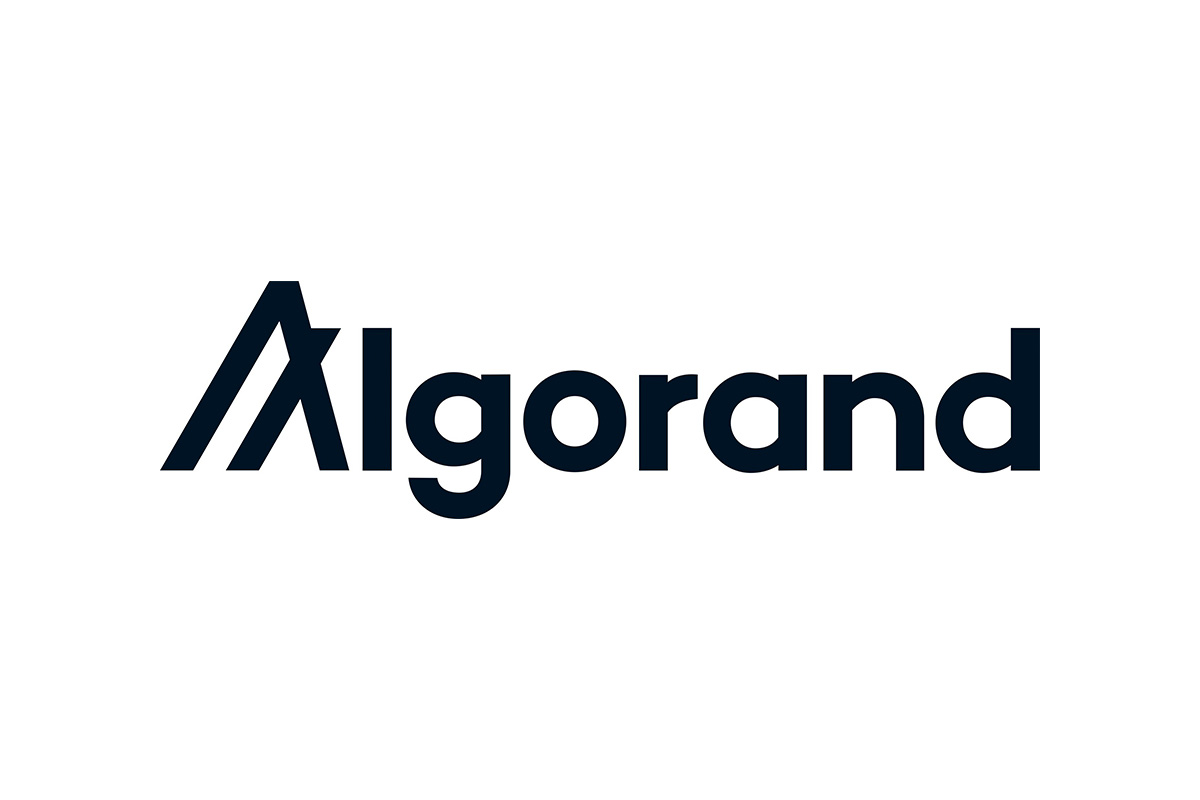
In a whitepaper published today, World Chess (LSE: CHSS) and the Algorand Foundation (ALGO) conceptualize a new blockchain-based system that would establish secure, private, and verifiable credentials for global sports organizations, including chess. Grandmaster Evgenij Miroshnichenko contributed to the paper alongside the Algorand Foundation and World Chess.
The move comes as interest in chess hits a new high, driven by popular television series on Netflix and the BBC, the 2024 awarding of the youngest-ever world chess champion, and the inclusion of chess for the first time in the Esports World Cup later this year.
If adopted, the system would allow chess players to independently manage their identity and credentials across all chess platforms and organizations with a single decentralized ID, and one login credential for everywhere they play. They could then easily “port” their identity, achievements, records of play, rankings, and rewards across online chess platforms, as well as seamlessly from the digital world to in-person games and tournaments. This provides them with a much easier way to prove their identity, no matter their status or documentation; it would also reduce tournament application times significantly. Chess organizations would then be able to welcome even more players to their competitions, including those who have built their chess career solely online, as well as players who have previously only competed in tournaments held by other organizations.
Among other benefits, the adoption of a “global chess passport” would make it much easier for organizers and chess clubs and federations alike to onboard and register players, both online and offline.
Another benefit of the proposed system is to safeguard fair play. As chess becomes increasingly integrated into e-sports and online competitions, the use of AI programs or player fraud (one player representing another) is an increasing concern. Being able to confirm player integrity (including whether they have been banned for cheating on any other platform) ensures credibility of chess contests and competitions. These verifiable credentials also preserve player privacy. They can be used to confirm player eligibility and relevant identity data without providing access to sensitive documentation, such as passports. Finally, identity verification also prevents fraud in tournament payouts. Phishing and other attempts to steal winnings are on the rise; this ensures only the rightful winner can access their prize funds.
“I think that chess needs its version of the global e-version of drivers license. It’s a global game, and using blockchain for the benefit of having one universal independently verifiable ID is something that both players and organizers will certainly benefit from,” says Ilya Merenzon, CEO of World Chess.
“This initiative is not just about chess; it’s about the future of fair play and verifiable achievement across all sports and esports,” said Bruno Martins, principal architect at the Algorand Foundation and co-author of the whitepaper. “Chess has a rich history of proving the usefulness of new technologies. In this case, World Chess is showing the integrity, privacy, and portability of records in any competitive arena is not only possible – it’s in the best interest of every player, everywhere.”
Statista estimates that the market for esports should reach $4.8 billion in 2025, with nearly 900 million players by 2029 (source), all of which could benefit from better cross-platform registration for online and in-person competitions.
The full whitepaper and more information about the proposed open-source system can be found here. Chess platforms, esports organizations and other parties interested in contributing to the project can get involved by contacting [email protected].
The post World Chess and the Algorand Foundation propose leveling the playing field with a “chess passport” appeared first on News, Events, Advertising Options.
Blockchain
Blaqclouds Board Approves 30-Day Revenue Acceleration and Ecosystem Monetization Plan
-

 Blockchain Press Releases6 days ago
Blockchain Press Releases6 days agoBybit’s CEO Meets with Vietnam’s Minister of Finance to Support Regulatory Sandbox and Strengthen Crypto Compliance
-

 Blockchain7 days ago
Blockchain7 days agoGlobal Islamic Fintech Forum Kicks off in Dubai
-
Blockchain4 days ago
Islamic finance Market to Reach $3.4 Trillion by 2027 in the short run and $7.7 Trillion by 2033 Globally, at 12.0% CAGR: Allied Market Research
-

 Blockchain3 days ago
Blockchain3 days agoBlocks & Headlines: Today in Blockchain – April 22, 2025 (Activity‑Weighted Consensus, Pectra Upgrade, Yoki Legacy, Verae–Evercycle, Earth Day)
-

 Blockchain2 days ago
Blockchain2 days agoBlocks & Headlines: Today in Blockchain – April 23, 2025 – EDPB, Binance, MicroCloud, Nile Coin, TruaBroker
-

 Blockchain Press Releases4 days ago
Blockchain Press Releases4 days agoIntroducing Clementine Bridge: Citrea Deploys First Complete BitVM Bridge Design on Testnet
-

 Blockchain Press Releases4 days ago
Blockchain Press Releases4 days agoBingX Brings Balance (EPT) to Spot with a 200 Million EPT Xpool
-

 Blockchain Press Releases2 days ago
Blockchain Press Releases2 days agoCompass Mining Partners with NiceHash to Provide Discounted Pool Fees to Customers

